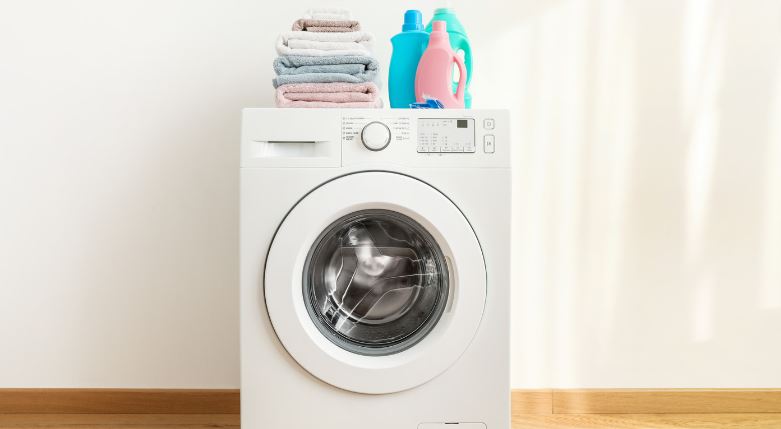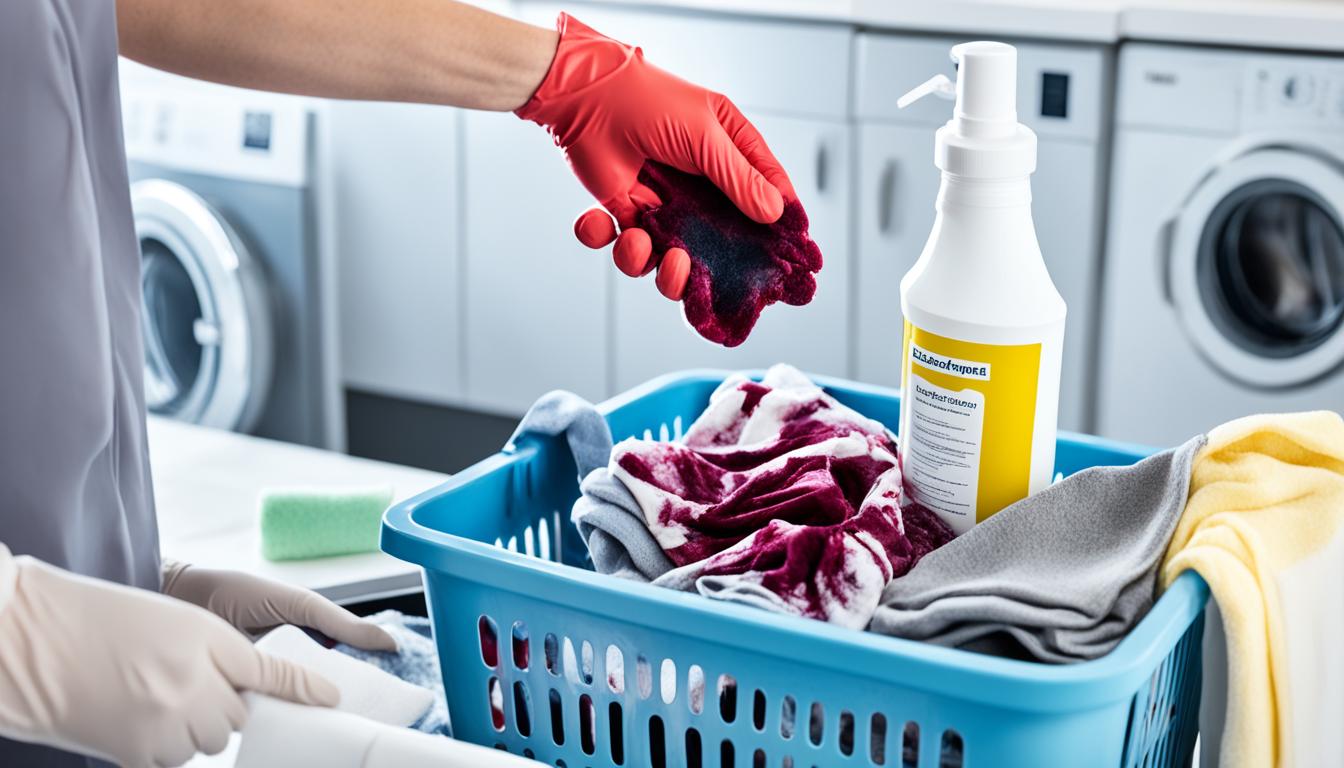Have you ever noticed a funky odour coming from your washing machine? Or perhaps you’ve noticed that your clothes aren’t coming out as clean as they used to. If so, it may be time to give your trusty washer a little TLC. Cleaning your washing machine is not only important for ensuring fresh and clean laundry, but it can also help prolong the life of your appliance. In this blog post, we’ll guide you through the steps on how to clean washing machine effectively. Say goodbye to odours and hello to sparkling-clean clothes!
Why Cleaning Your Washing Machine is Important?
A clean washing machine is essential for maintaining the cleanliness and freshness of your laundry. Over time, dirt, grime, and detergent residue can build up in the drum, detergent drawer, and other parts of the machine. This buildup not only affects the performance of your washer but also leaves behind unpleasant odours that can transfer to your clothes.
Regular cleaning helps prevent these issues by removing trapped dirt and residues. It ensures that your machine operates efficiently and effectively, resulting in cleaner clothes with each wash. Additionally, a clean washing machine reduces the risk of mould or mildew growth inside the drum or on the door seal – a common issue in humid environments.
Maintaining your washing machine’s cleanliness also increases its lifespan. By removing debris from critical components like filters and valves, you reduce strain on these parts, promoting smoother operation and preventing potential breakdowns. With proper maintenance and regular cleaning, you’ll get more years out of your trusty appliance!
How to Clean Washing Machine?

Cleaning your washing machine is an essential task that often gets overlooked. Over time, dirt, grime, and detergent residue can build up inside the machine, leading to unpleasant odours and even affecting the performance of your laundry. But don’t worry – cleaning your washing machine is easier than you might think! Let’s see how to clean washing machine in a step by step manner.
Preparing the Washing Machine for Cleaning
Before you dive into cleaning your washing machine, it’s important to take a few steps to prepare. First, unplug the machine from the power source to ensure safety. Next, gather all necessary cleaning supplies, such as vinegar or bleach, a soft brush or cloth, and hot water.
Once you have everything ready, start by removing any clothes or items from the drum of the machine. Check for any loose objects like coins or hairpins that may have gotten stuck in crevices. These small items can cause damage if left inside during the cleaning process.
Cleaning the Detergent Drawer
The detergent drawer of your washing machine can easily become a breeding ground for mould, mildew, and soap residue. Cleaning it regularly is essential to maintain a clean and efficient washing machine.
To start, remove the detergent drawer from the machine. Most drawers can be easily pulled out or have a release button. Check the manufacturer’s instructions if you’re unsure how to remove it.
Next, rinse the detergent drawer under warm water to remove any visible residue. Use an old toothbrush or sponge to scrub away any stubborn stains or buildup. Pay close attention to the corners and crevices where grime tends to accumulate.
Once clean, dry the detergent drawer thoroughly before placing it back into your washing machine. This will help prevent moisture from lingering in this area and reduce the chances of mould growth.
Keeping your detergent drawer clean not only ensures that your laundry comes out fresh but also helps prolong the lifespan of your washing machine. So don’t neglect this often overlooked part when cleaning your appliance!
Removing and Cleaning the Filter

Preparing the Washing Machine for Cleaning is an important step in maintaining its performance and longevity. One crucial component to focus on during this process is removing and cleaning the filter. The filter plays a vital role in catching lint, debris, and other particles that may accumulate over time.
To begin, locate the filter on your washing machine. This will typically be found at the bottom front of the machine behind a small access panel or flap. Once you have located it, use caution when opening it, as water may still be present.
Next, carefully remove the filter by unscrewing it or pulling it out, depending on your specific model. Take note of any visible debris or buildup that has collected within the filter. This can often include lint, hair, coins, and even small clothing items.
Now that you have removed the filter from your washing machine, it’s time to clean it thoroughly. Begin by rinsing off any loose debris under running water. For a more thorough clean, soak the filter in warm, soapy water for about 15 minutes before scrubbing gently with a soft brush to remove any remaining residue.
Cleaning the Drum and Door Seal
To ensure thorough cleaning, don’t forget to give some attention to the drum and door seal of your washing machine. Over time, dirt, lint, and residue can accumulate in these areas, leading to unpleasant odours or even mould growth.
Start by wiping down the drum with a damp cloth to remove any visible debris. Pay special attention to the rubber gasket around the opening, as this is where buildup tends to occur. Use mild detergent or vinegar diluted with water for stubborn stains.
Next, tackle the door seal by carefully inspecting it for any trapped dirt or grime. Gently scrub away any residue using an old toothbrush or soft brush dipped in soapy water. Rinse thoroughly and dry with a clean cloth.
Regularly cleaning the drum and door seal not only keeps your washing machine smelling fresh but also helps prolong its lifespan. So don’t overlook these important areas during your cleaning routine!
Running a Cleaning Cycle With Vinegar or Bleach

Another effective method for cleaning your washing machine is to run a cleaning cycle with either vinegar or bleach. Both of these common household items have powerful cleaning properties that can help eliminate built-up residue and odours.
To begin, fill the detergent drawer with around two cups of white vinegar or half a cup of bleach. The acidity in vinegar helps remove mineral deposits, while bleach kills bacteria and removes stains. Then, set the washer to run at its highest temperature and longest cycle. This will allow the cleaning agent to clean the drum and other internal components thoroughly.
Once the cycle is complete, open up the door and let it air dry before closing it again. Remember to rinse out any remaining vinegar or bleach from the detergent drawer before using it for regular laundry loads.
By incorporating this simple step into your regular maintenance routine, you can keep your washing machine running smoothly and ensure that your clothes come out fresh every time!
| Step | Instruction |
| Unplug the machine | Ensure safety by disconnecting the washing machine from the power source. |
| Gather cleaning supplies | Collect vinegar or bleach, a soft brush or cloth, and hot water for the cleaning process. |
| Remove clothes and items | Clear the drum of any clothing or objects, checking for loose items like coins or hairpins. |
| Clean the detergent drawer | Remove the drawer, rinse under warm water, scrub away stains, and dry before reinserting into the machine. |
| Remove and clean the filter | Locate the filter, remove it carefully, clean off debris, soak in soapy water, scrub gently, and reattach. |
| Clean the drum and door seal | Wipe down the drum with a damp cloth, focus on rubber gasket, use mild detergent or vinegar for stubborn stains. |
| Run a cleaning cycle | Fill detergent drawer with vinegar or bleach, set to highest temperature and longest cycle, air dry after. |
Tips for Maintaining a Clean Washing Machine
Maintaining a clean washing machine is essential to ensure its optimal performance and longevity. Here are some simple tips to help you keep your machine in shape.
Always remove wet clothes promptly after the wash cycle is complete. Leaving damp clothing in the drum can create a breeding ground for mould and mildew, leading to unpleasant odours. Additionally, wiping down the inside of the drum with a clean cloth or sponge regularly can help prevent any buildup of dirt or residue.
It’s important to use the right amount of detergent for each load. Using too much detergent can cause excessive sudsing and leave behind soap scum on your machine’s components. Follow the manufacturer’s instructions for dosage recommendations, or consider using eco-friendly laundry detergents that require less product.
Don’t forget about regular maintenance tasks such as cleaning out the lint filter and checking hoses for any blockages or leaks. These small steps can go a long way in preventing clogs and potential damage to your washing machine.
By following these simple tips on how to clean washing machine blog, you’ll not only maintain a clean washing machine but also prolong its lifespan while ensuring fresh and clean laundry every time!
Natural and Eco-friendly Alternatives to Chemical Cleaners

While using vinegar or bleach can effectively clean your washing machine, some people prefer to avoid chemical cleaners altogether. Thankfully, there are natural and eco-friendly alternatives that can get the job done just as well.
One popular option is using baking soda. Simply mix ¼ cup of baking soda with water to create a paste. Apply the paste to any stubborn stains on the drum or door seal, then scrub gently with a soft cloth or sponge. Rinse thoroughly afterwards.
Another natural alternative is white vinegar mixed with lemon juice. This combination not only helps remove dirt and grime but also leaves your washing machine smelling fresh. Mix equal parts white vinegar and lemon juice, then pour it into the detergent drawer and run a cleaning cycle.
For those who prefer a scent-free option, citric acid is an excellent choice. Dissolve two tablespoons of citric acid in warm water and pour it into the detergent drawer before running a cleaning cycle.
Additionally, essential oils such as tea tree oil or lavender oil can be added to any of these natural cleaners for added fragrance and antimicrobial properties.
Remember to always check your washing machine’s manual for specific cleaning instructions before trying any alternative methods.
Conclusion
Maintaining the cleanliness of your washing machine is important for increasing its lifespan and sustaining its ability to perform. By following the steps outlined in this how to clean washing machine article, you can easily and effectively clean your washing machine.
Regularly removing debris from critical components like the detergent drawer and filter, as well as wiping down the drum and door seal, can help prevent unpleasant odours and reduce the risk of mould growth. Running a cleaning cycle with vinegar or bleach is another effective method for removing built-up residue and maintaining a fresh-smelling washing machine.
Don’t forget to incorporate regular maintenance tasks into your routine, such as checking for blockages or leaks in hoses and wiping down the inside of the drum. Using natural and eco-friendly alternatives to chemical cleaners can also be a great option for those who prefer a more environmentally friendly approach.
With these simple steps, you can ensure that your trusty washing machine continues to provide you with clean and fresh laundry for years to come. So don’t neglect this important task – give your washing machine the TLC it deserves!
FAQ
Why is cleaning your washing machine important?
A clean washing machine is essential for maintaining the cleanliness and freshness of your laundry. Over time, dirt, grime, and detergent residue can build up in the machine, affecting its performance and leaving behind unpleasant odours that can transfer to your clothes.
How do I clean my washing machine effectively?
To clean your washing machine effectively, start by preparing it for cleaning, cleaning the detergent drawer, removing and cleaning the filter, cleaning the drum and door seal, and running a cleaning cycle with vinegar or bleach. These steps help remove trapped dirt, residues, and prevent odours.
What are some tips for maintaining a clean washing machine?
Always remove wet clothes promptly after the wash cycle, use the right amount of detergent, regularly clean the lint filter, and check hoses for blockages or leaks. These maintenance tasks prevent clogs and potential damage, ensuring your washing machine operates smoothly.
Are there natural alternatives to chemical cleaners for washing machine cleaning?
Yes, you can use natural alternatives like baking soda, white vinegar mixed with lemon juice, citric acid, or essential oils such as tea tree oil or lavender oil to clean your washing machine effectively. These options are eco-friendly and leave your machine fresh-smelling.
How does cleaning my washing machine prolong its lifespan?
Regular cleaning removes debris from critical components, reduces strain on parts like filters and valves, prevents mould growth, and ensures efficient operation. By maintaining a clean washing machine, you can increase its lifespan and continue to enjoy fresh and clean laundry.







